Journal of Ergonomics
Open Access
ISSN: 2165-7556
+44 1300 500008
ISSN: 2165-7556
+44 1300 500008
Review Article - (2021)
Work-related Musculoskeletal Disorders (MSD's) are prevalent among rebar workers, which pose challenges to productivity and health in the construction industry. Ergonomic interventions can help in reducing MSD's. However, few studies have only considered interventional and post-interventional studies. This review focuses on identifying significant ergonomic advances in different countries, adopted methods and possible future studies. A literature review was carried out in Google Scholar, Scopus and PubMed from 2000 to 2020 resulted in thirty-nine articles. A systematic review and a bibliometric analysis have been done on the selected papers. The review extracted the significant findings from the articles and classified them into country-specific. Moreover, the frequency of assessment methods shows that the USA and China conducted most assessment studies on MSD. The study suggested implementing multiple interventions and the need for more advanced studies in gait instability, heat stress and low back disorders.
Musculoskeletal disorders; Rebar workers; Lower back pain; Post-interventional studies
Vibrational construction works involve physically fatiguing tasks, making construction workers vulnerable to MSD's [1]. Even though it has tremendous growth, the safety and health status of construction workers are poorly reported. An ongoing study by National Institute of Occupational Safety and Health (NIOSH) has indicated that among 22 significant occupations, the highest prevalence of both frequent exertion and continuous standing happened inside the construction industry [2]. As noted in The Centre for Construction Research and Training (CPWR), construction laborers lose 39% working time than laborers in other sectors due to MSD's occurrence [3]. According to the Bureau of Labor Statistics (BLS), in 2018, MSD cases accounted for incident rate of 28.9% for all worker injury and illness cases [4].
Ironworkers or Rebar workers in the construction sector perform cutting, tying, moving and placing rebars for concrete reinforcing. They perform numerous tasks involving repetitive movements, which can strain the back muscles, lower limb, shoulders and hand [5-7]. Studies reveal that the prevalence of MSD symptoms is high in the lower back [56%], wrist/fingers [40%], knees [39%] and shoulders [36%] [8]. Similar studies indicate the prevalence of low back pain [46%] and wrist pain [59%] for workers involved in rebar bending [9]. Buchholz and Forde studied the postures leading to discomfort and indicated that rebar workers were in severe flexion in trunk postures [5,10]. For arm postures, the rebar workers have one elbow above the shoulder and they stood on uneven ground for a prolonged period. Other factors leading to MSD's are carrying heavy loads and forceful pulling [11,12]. The studies indicate that rebar workers are at high risk. Moreover, fatiguing of rebar workers due to heat stress while working for long hours outdoor can cause physical, physiological, MSD's and lead to lack of productivity [13- 18]. Fatiguing can also cause postural instability and gait instability leading to slips, trips and falls [19-23].
The high prevalence of MSD's indicates the need for intervention. The research identified few interventions: power tying tools, longhandled stapler tools and low sitting stools [24-26]. Regular posture training, work-rest scheduling, job rotation and gait stability training act as a practical preventive intervention to reduce the impact of MSD's [27,28]. However, there is a need for more lowcost interventions among rebar workers.
Among different construction trades, rebar workers are highly vulnerable to MSD's [29]. It is necessary to reduce the MSD related injuries happening to rebar workers in particular. The article seeks to find the ergonomic assessment methods used to assess rebar workers' MSD's. The article's scope is to identify country-specific advancements in identifying MSD’s and identify if any intervention techniques are used. The review will help to identify the gaps in evaluating MSD’s among workers and the scope for interventional techniques. The intended outcome of the study is:
• It identifies research in the area of occupational disorders and injuries among rebar workers in different developing countries.
• Extraction of assessment methods and assessment tools used.
• Bibliometric analysis of reviewed literature.
The review is done following the Preferred Reporting Items guidelines for Systematic Review and Meta-Analyses (PRISMA) [30]. The flowchart representing the review process (Figure 1). However, a review protocol was not registered for the current review. The literature search was carried out from electronic databases Google Scholar, Scopus, and PubMed from 2000 to 2020. The keywords used for the study include "Bar benders" or "ironworkers" or "rebar workers" or "rod workers" AND "MSD" or Ergonomics." Google Scholar, Scopus and PubMed gave a total of 1473 results. The duplicates of articles were removed from the different database results.
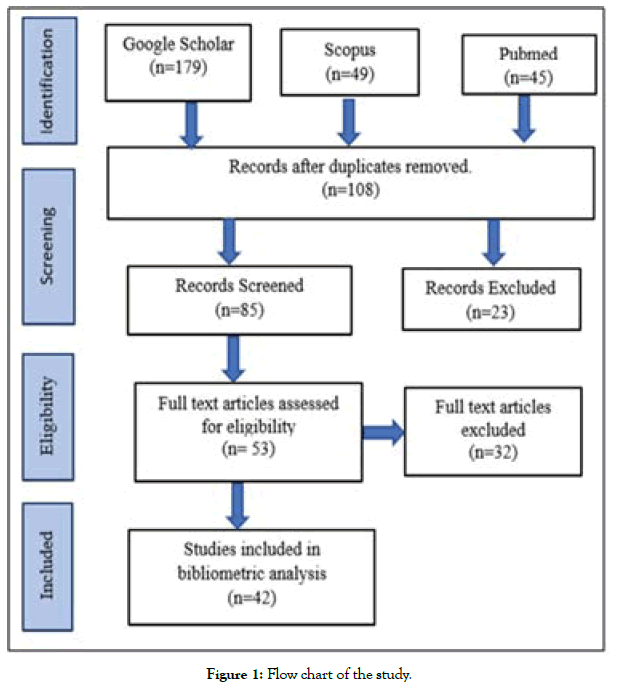
Figure 1: Flow chart of the study.
The initial screening of the articles was done by review of title and abstract. The articles that mentioned construction trades other than ironworkers or rebar workers were excluded from the study. It includes rebar tying workers, bar lifting and bar laying workers. The study included the articles investigating MSDs, gait analysis, heat stress and ironworkers' cognitive characteristics only. The studies related to ironworkers in steel plants and manufacturing units are excluded; only construction workers are considered. The data extracted from the articles on the ergonomic assessment of construction rebar workers are classified based on the area of research, author, assessment method, the subject chosen, the tools used for evaluation, discomfort focused and identified interventions.
A bibliometric analysis of the selected 42 articles was conducted. Bibliometric analysis is chosen because it gives a set of practices for doing the meta-analysis by utilizing the semantic relationship of bibliographic information from research databases to comprehend the source of the research gap and outline examples of scientific fields [31,32]. The articles were imported to Mendeley reference management software, and the data was exported to RIS format. The frequency of publication years, frequency of authors and author keywords were analyzed using the bibliometric software package Bibexcel. The co-occurrence of terms in author keywords is analyzed and visualized using Vos viewer software to identify the research hotspots.
Review based on the bibliometric analysis
The articles were selected from the year 2000 to 2020. The frequency of publication years is shown in Figure 2. During the years 2000 to 2006, the publication rate was constant. An increase in publication was seen in the year 2014, and further, the publication rate decreased. Further, growth is noticed in the year 2018. The research is mainly focused on direct measurement and self-report assessment. It is observed that rebar workers are at high risk of MSD’s due to their task content [6,33]. However, the interventionbased study among this construction trade is not implemented widely. Publications are analyzed based on the study regions, which are shown in Figure 3. Most of the reviews are conducted in the USA and China. The differences in the number of publications in various countries indicate the extent of research in this area. Moreover, it shows the need for broad studies of rebar workers' occupational health in other countries. The bibliometric analysis also analyzed the frequency of authors, which is depicted (Figure 4).
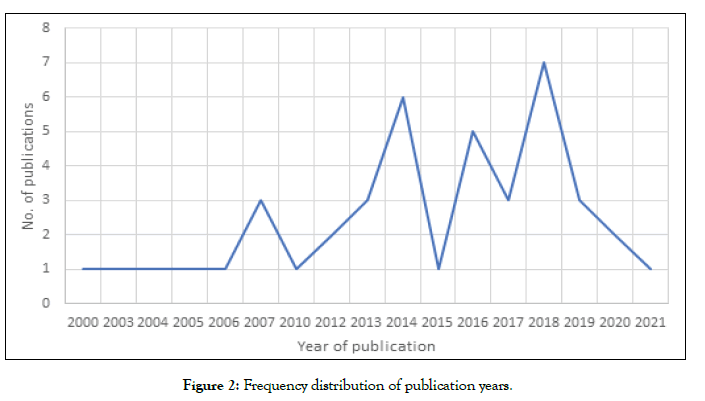
Figure 2: Frequency distribution of publication years.
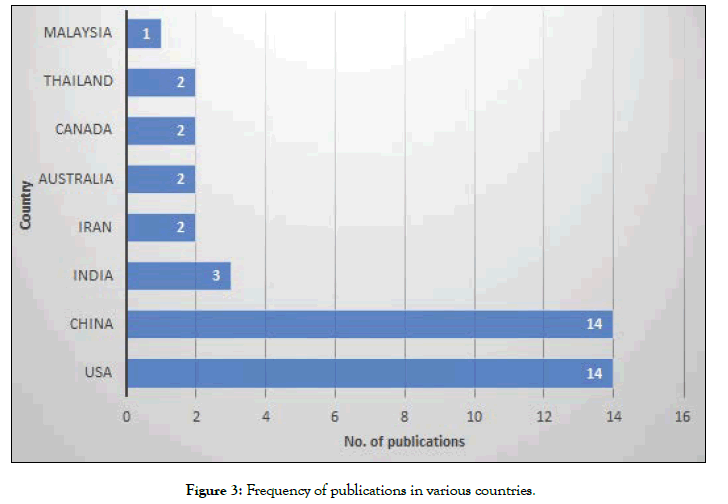
Figure 3: Frequency of publications in various countries.
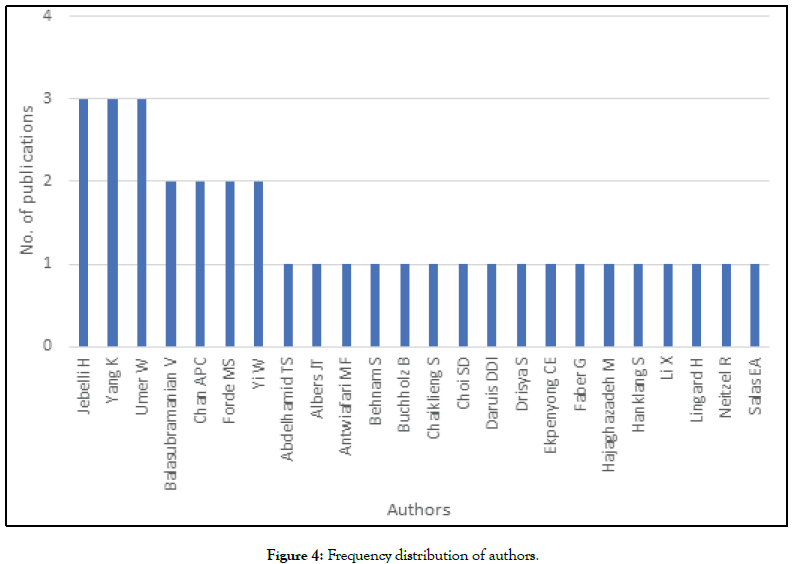
Figure 4: Frequency distribution of authors.
Co-occurrence of terms in author keywords
VOS viewer is a tool for developing and envisioning bibliometric networks. To identify the research hotspots in the field, we utilized VOSviewer to investigate the articles' keywords, and a heat map was obtained, as appeared in Figure 5. The nodes' size indicates the author's frequency of occurrence, and the line connecting nodes indicates the tie strength between the keywords. The author keywords' co-occurrence analysis reveals that the most commonly occurring keyword is the occupational risk or ergonomic risk assessment of male workers in the construction industry. The most widely occurring keyword is ergonomics, construction industry, male, occupational risk, controlled study, and biomechanics (Table 1).
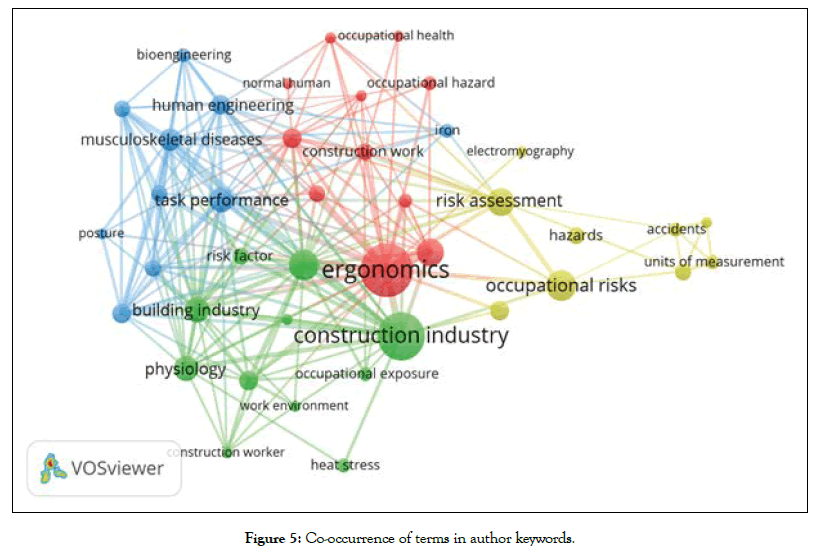
Figure 5: Co-occurrence of terms in author keywords.
| Country | Author | Assessment method | Experienced/Inexperienced | Techniques used | Discomfort focused | Intervention recommended | |
|---|---|---|---|---|---|---|---|
| Australia | 1 | [6] | Observational Study | Experienced (n=14) | REBA, RULA, Strain Index | Wrist pain, Low back pain | - |
| 2 | [24] | Direct measurement, Remote sensing technologies | Experienced (n=1) | IMU, a Motion capture system | Lower back pain, wrist injury | Power tying tools | |
| China | 3 | [34] | Self-Report, Direct Measurement | Inexperienced student population (n=20) | Questionnaire (Borg CR 10), sEMG | Lower back discomfort | - |
| 4 | [35] | Direct Measurement | Inexperienced (n=5) | sEMG, IMU, Oximeter | Lower back pain, Trunk disorder, Lower extremity disorder | Low sitting stool | |
| 5 | [36] | Direct Measurement, | Experienced (n=10) | EMG, Motion sensors | Lower back pain | - | |
| 6 | [28] | Observational study simulation analysis | Experienced (n=29) | Monte Carlo simulation | Heat stress | - | |
| 7 | [37] | Direct Measurement, Automated Detection, Remote sensing technology | Experienced (n=1) | Plantar pressure sensors, IMU, Deep learning algorithm, video camera | Full body assessment | - | |
| 8 | [14] | Observational Study | Experienced (n=19) | Physiological strain index | Physical fatigue | - | |
| 9 | [15] | Observational Study | Experienced (n=10) | Thermal Work Limit(TWL) | Heat stress | - | |
| 10 | [17] | Direct Measurement | Experienced (n=16) | Heat stress monitor | Heat stress | - | |
| 11 | [38] | Direct Measurement | Experienced (n=13) | Force plate, EMG, oximeter | Loss of balance, lower back pain, lower limb pain | - | |
| 12 | [39] | Direct measurement, Real-time sensing | Experienced (n=5) | IMU-based mobile-health, mobile phone application | Lower back pain | WIMU m-health | |
| 13 | [40] | Direct Measurement | Experienced (n=14) | Heat stress monitor | Heat stress | - | |
| 14 | [18] | Direct measurement | Experienced (n=39) | Heat stress monitor | Heat stress | - | |
| 15 | [41] | Direct Measurement | 2D camera recognition | Arms, legs, back pain | - | ||
| 16 | [37] | Direct Measurement | Experience (n=2) | 3D pose recognition | Full body assessment | - | |
| Canada | 17 | [42] | Direct Measurement | Experienced and Inexperienced (n=14) | EMG | Lower back pain | - |
| 18 | [25] | Direct measurement | Experienced (n=11) | Gyroscope | Trunk and back pain | Power tying tools | |
| USA | 19 | [13] | Direct measurement, | Experienced (n=7) | Heart rate monitor, calorimetry measurement | Physical Fatigue | - |
| Metabolic analysis system | |||||||
| 20 | [2] | Self-Report, Direct measurement, Remote sensing technologies | Experienced (n=8) | Questionnaire (Borg CR 10), Goniometers, Videotapes | Lower back pain, Hand pain | Power tying tools | |
| 21 | [8] | Self-Report | Experienced (n=981) | Telephonic Interview | Full body assessment | - | |
| 22 | [19] | Direct measurement | Experienced (n=1) | WIMU | Slip, trip and falls | - | |
| 23 | [20] | Direct measurement | Experienced (n=8) | WIMU | Slip, trip and falls | - | |
| 24 | [43] | Direct Measurement | Experienced (n=4) | WIMU | Slip, trip and falls | - | |
| 25 | [23] | Direct Measurement, Automated Detection, Remote sensing technologies | Inexperienced (n=2) | WIMU, Detection algorithm, video recording | Slip, trip and falls | - | |
| 26 | [22] | Direct Measurement, Automated Detection, Remote sensing technologies | Inexperienced (n=5) | WIMU, Detection algorithm, video recording | Slip, trip and falls | - | |
| 27 | [16] | Direct Measurement | Experienced (n=11) | Dynamometer, Body Map instrument | Full body assessment | - | |
| 28 | [5] | Observational study | Experienced (n=17) | PATH, Work sampling method | Leg, trunk and arm pain | - | |
| 29 | [10] | Observational study | Experienced | PATH | Leg, trunk and arm pain | - | |
| 30 | [44] | Biomechanical analysis | Experienced (n=4) | The 3D inverse dynamics model | Lower body pain | - | |
| 31 | [45] | Direct measurement, Self-report | Experience (n=5) | WIMU, Questionnaire | Fall, slip, and trip | - | |
| Inexperienced (n=11) | |||||||
| 32 | [46] | Direct measurement | Experienced(n=12) | Virtual Reality Simulator | Fall, slip and trip | - | |
| India | 33 | [47] | Self-Report, Direct Measurement | Experienced | Questionnaire, EMG | Lower back disorder, arm and full hand pain | - |
| 34 | [48] | Biomechanical Model | Experienced | Schultz–Andersson model | Lower back pain | - | |
| 35 | [49] | Self-Report, Observational Study | Experienced (n=25) | Questionnaire, REBA, RULA | shoulder, knee, and upper back | - | |
| Malaysia | 36 | [50] | Self-Report, Observational Study | Experienced (n=61) | REBA, RULA | Upper and Lower back pain | - |
| Netherlands | 37 | [51] | Direct measurement, Biomechanical analysis | Experienced (n=12) | Force plate, Optotrak system | Lower back disorder | - |
| Africa | 38 | [52] | Self-Report | Experienced(n=1200) | Questionnaire | Full body assessment | - |
| Iran | 39 | [53] | Observational Study | Experienced (n=10) | PATH | Hand, Shoulder and leg pain | - |
| 40 | [9] | Self-report, Observational | Experienced (n=20) | Questionnaire, OWAS | Full body assessment | - | |
| Thailand | 41 | [54] | Self-Report, | Experienced (n=272) | Questionnaire | Lower back pain, shoulder pain | - |
| 42 | [55] | Self-Report, Direct Measurement | Experienced (n=241) | Questionnaire, Light meter, SWI, fitness test, Dynamometer | Upper limb disorder, Lower back pain | - |
Note: ‘n’ is number of experienced or inexperienced students.
Table 1: Overview of assessment methods, techniques used, discomfort focused and interventions used for ergonomics assessment of rebar workers.
The risk assessment of construction ironworkers has not much explored. Risk assessment among rebar workers done by different countries is reviewed in this article. It is observed that most of the studies are happening in the USA and China.
Assessment studies in the USA
A review of research done in the USA focuses on direct measurement techniques to assess risk among rebars construction workers. The physiological demand of ironworkers, which revealed that the work is exhausting and alternative work is to be identified, which otherwise can lead to low productivity [13]. An intervention-based approach with Power Tying (PT) tools was used, which revealed that the use of power tools reduced arm and wrist movements, leading to upper limb MSD's. It was compared with PT with extended handles, which gave the additional benefit of no deep bending, thereby reducing loading on the L5/S1 disc [2]. Studies on the gait stability of ironworkers demonstrate the capability of IMU sensors to capture kinematic data to assess workers' dynamic stability. The study also validated the feasibility of gait stability metrics (Max LE, Gait abnormality score) to characterize fall risk [19,21,43]. Near miss fall detection approach of individual workers can be utilized as a safety management tool to monitor unsafe working conditions [23,43]. Choi, et al. suggested using hand tools and providing necessary training on how to use them to reduce wrist pain [16]. An observational study using PATH suggested using cranes to place rebars to reduce manual material handling and use of ready-cut rebars to minimize manual work [5]. Forde and Buchholz suggested the possibility of prior acute injury effect on the prevailing MSD's. So, future studies need to access such options [10].
Assessment studies in China
Studies from china on risk assessment of ironworkers also focused on direct measurement methods. A study computed spinal biomechanics of ironworkers and revealed that heavier lifting weights could increase the back muscle compressive force; as a result, improving Lower Back Disorders (LBD). The study recommends using squat lifting over stoop lifting to minimize LBD's [56]. Supporting the above study Umer, et al. [57] concluded that stooping increases LBD risk than other postures. He also suggested postural variation throughout the work to minimize MSD's. An intervention study suggested using squatting stools as an effective intervention to maintain trunk flexion angle as per ISO recommended limits and enhanced better lower extremity blood circulation [26]. A heat stress study on rebar workers illustrated heat stress on fatigue and workers' productivity.
The study developed a work-rest schedule that balanced workers' productivity, health, and safety and suggested incorporating prefabricated construction rather than outdoor works to reduce heat stress-related issues on workers [28]. A computer vision approach developed a tool to obtain information on posture and external load, thereby understanding the relationship between construction activities and workload. Further, this approach could help in ergonomic interventions such as workstation design and work-rest schedule [37]. Recent studies have used 3D view-invariant features to extract the posture of workers using a single 2D camera [41]. The approach helps to recognize the leg, arm, and back postures of workers accurately. However, future researches need to consider occluded skeleton and joints for improved classification. 3D working poses estimation was done using RGB images using deep learning neural network, this method helps in economical assessment of unsafe postures and productivity of workers [37]. Optimal recovery time for rebar workers was developed through monitoring physiological parameters. The study recommended using cooling fans with automized water spray, schedule regular breaks, rotate duties and work sites, provide drinking water and excellent shelter, and avoid alcohol use [14]. A thermal work limit model was developed, which could help better safeguard workers' health and safety by reducing the occurrence of heat stress [15].
Further study on heat stress and labor productivity was conducted and concluded that the period from 7:00 to 9:00 is the safest time and 14:00 to 15:00 is the most dangerous time [17]. Supporting the above studies Yi and Chan indicates that age, alcohol drinking habits, percentage of maximum Heart rate, work duration, and Wet Bulb Globe Temperature (WBGT) are good predictors in determining rebar workers' labor productivity [40]. A fall accident analysis study on rebar workers revealed that stool sitting provides more post-task standing stability than stooping and squatting. It also suggested using safety informatics to analyze fall risks to monitor workers' hazards [38]. Recent study have utilized virtual reality simulators in evaluating upper limb stability during gait at height. The Virtual reality can enhance further hazard prevention techniques [46].
Assessment studies in India
An EMG-based study on rebar workers revealed that increasing the worktable height and grip arm distance can decrease the load on the spine; moreover, the bar's diameter can increase the EMG, thereby increasing LBD's [47,48]. An observational study recommended avoiding repetitive tasks, working in an upright posture, and reducing manual material handling [49].
Assessment studies in Iran
An observational study revealed the awkward postures leading to MSD and suggested the need for ergonomic redesign and modification like ergonomic mats and suitable tools and job rotation [9]. A similar observational study revealed that non-neutral trunk posture, squatting, kneeling, and leg bend were frequently used by workers [53].
Assessment studies in Australia
A comparison study evaluated REBA's effectiveness, RULA, and Strain Index (SI). Results suggest that SI is more effective in analyzing non-fixed tasks [6]. A tool assessment study revealed that different tools perform differently. A long-handled stapler tool significantly reduced trunk inclination; on the other hand, a power tying tool reduced harmful wrist movement but increases trunk inclination [24].
Assessment studies in Canada
An experimental field study was conducted to evaluate the automatic rebar-tying machine's potential to reduce MSD's. The results indicated that the rebar tying machine reduced the magnitude, frequency, and duration of exposure. Moreover, the tying time is reduced [25]. A direct measurement study on experienced and inexperienced indicated that different training and task selection are required for both cases as they experience different fatigue and strain levels [42].
Assessment studies in Thailand
A cross-sectional study among women rebar workers revealed 57.7% of MSD and suggested the need for workstation design and ergonomic training [54]. The prevalence of MSD was studied, and results help set guidelines on MSD’s and upgrade the improvement of working conditions [55].
The review of MSD’s on construction workers in general and Material handling workers are mostly seen, whereas a review on rebar workers who are reported to have high risk for MSD’s are not done so far [29]. The present reviews also have limitations because it has considered only few databases which were accessible to the researcher. Future review need to explore all the other databases to gather more information.
Even though many researchers have conducted assessment studies on rebar workers, it is observed that most of the studies happen in a laboratory setting except for observational assessment. Laboratory controlled setting does not provide the external environment's impact, and therefore generalization of results is not possible [58]. The rod work includes rebar bending, lifting, placing, and tying; however, it is observed that most of the studies consider only rebar tying and bending activity. Therefore, it is necessary to investigate the impact of various lifting weights and postures of rebar workers with different experience levels to develop new lifting guidelines [34].
The investigation of rebar activities for different postures and their impact on other body parts can provide better results. However, it is necessary to consider longer work shifts to quantify the results [57]. It is observed that experienced workers choose to remain in greater trunk flexion and therefore require less back musculature, and fatiguing happen lately [59]. Consequently, it is ideal for developing training methods to help inexperienced workers adapt to experienced workers' working posture at an early stage to reduce fatigue. Fatiguing workers can cause loss of balance events, eventually leading to Fall accidents. Researches contributed to workers' near-miss fall accidents, but future research requires investigating various rebar postures and other dynamic activities [43,60]. There is a growing need for developing a new tool to measure the onsite postural stability of workers under different circumstances and different working times [38].
Heat stress can lead to a lack of productivity, increased accident rate, heat illness and deaths [14]. Such extreme conditions are observed in construction rebar workers in India as well. Still, the effect of heat stress on rebar workers in India is not studied even though India has extremely hot weather conditions. There is a need for work-rest scheduling, job rescheduling, and reducing nonproductive time [40].
The intervention studies on rebar workers are limited. Even fewer studies have resulted in the development of post-intervention studies to validate its effectiveness. Most of the intervention studies are observed in developed countries. However, no intervention development has been reported from India. The combined effect of multiple interventions is not studied among construction rebar workers. Combinations of interventions have the most significant impact in reducing MSD. There is need for improved study design that implements interventions to reduce prevalence of MSD’s among metal fabrication workers [61]. Future studies are required to investigate the cost-effectiveness of different ergonomic interventions [56]. The effectiveness of various training interventions needs to be examined to reduce MSD’s and gait abnormality among rebar workers.
Future works require analyzing the cost-effectiveness of different interventions; there no studies conducted to specifically develop of personal protective equipment's for rebar workers, considering its effectiveness and comfort. There is also a growing need to implement postural training methods in construction sites to reduce MSD's. Studies have to be carried out to investigate the effectiveness of using multiple interventions to improve occupational health. Studies are also required to monitor the workers in real time by incorporating virtual reality and computer vision approaches. The future studies need to overcome the challenges included in predicting the safe working postures of workers like occlusion of joints and body parts. There is also a need to provide more posture data for training the dataset for proper posture classification [41]. In addition to the posture the force is also variable for biomechanical and ergonomic assessment. Therefore, future research can be conducted by observing the speed and frequency of postures from consecutive video frames rather than using sensors which are difficult to be used in construction sites [41].
A bibliometric and systematic review of occupational hazards, assessment methods and country specific advancements in risk assessment of rebar construction workers were performed. The review of the ergonomic assessment of rebar workers health revealed that the significant occupational risks identified are lower back disorders, wrist pain, heat stress disorders, and gait stability issues. The bibliometric analysis identified the China and USA are the countries performing advanced assessment and interventional studies to solve MSD’s among rebar workers. The review identified the ergonomic studies on rebar workers are not satisfactory in India. There is an increasing need for implementing engineering improvements, controls, and the development of interventional tools. There are several studies on the review of ergonomic assessment of construction workers, but no research is focused on the review of ergonomic evaluation of rebar workers. The review of ergonomic assessment on rebar workers reveals that most of the studies directly measure MSD’s. Therefore, the study highlights the need for interventions to improve the health of workers.
Future work in ergonomic evaluation of MSD’s among rebar workers need to consider tools which can be used in real construction sites without causing discomfort to workers. There is growing need for implementing low-cost interventions to reduce MSD’s, development of worker specific personal protective equipments is essential. Researchers must focus on postural training and monitoring in construction sites and implementation of multiple intervention technologies to evaluate its effect on reducing MSD’s.
Citation: Geordy R, Sudhakumar J (2021) Ergonomic Assessment of Construction Rebar Workers: A Country Wise Systematic Review. J Ergonomics. S5:004.
Received: 14-Oct-2021 Accepted: 28-Oct-2021 Published: 04-Nov-2021 , DOI: 10.35248/2165-7556.21.s5.004
Copyright: © 2021 Geordy R, et al. This is an open-access article distributed under the terms of the Creative Commons Attribution License, which permits unrestricted use, distribution, and reproduction in any medium, provided the original author and source are credited.